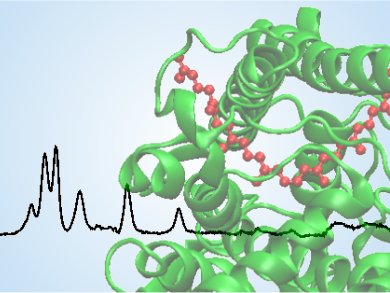Spheroidene is a long, chainlike molecule that is important in the photosynthetic machinery of certain bacteria. It has different structures in the different parts of the photosynthetic system, and there has been an ongoing discussion regarding the structure it assumes in the photosynthetic reaction center of purple bacteria.
J. Neugebauer and colleagues, Technical University of Braunschweig, Germany, and Leiden University, The Netherlands have made an important step towards solving this riddle by calculating the resonance Raman spectra for this molecule on the basis of quantum mechanical principles.
While former theoretical approaches only considered truncated versions of spheroidene, in this study the authors report calculations employing the full pigment. They find that the full model leads to a better agreement between calculated and experimental spectra, particularly when spheroidene is considered in its 15,15′-cis configuration (in the region between 1100 and 1200 cm–1, see below). Both the truncated and the full model suggest that the 13,14-cis configuration could also be present in the reaction center in addition to the 15,15-cis structure.

Images: © Wiley-VCH
- The Resonance Raman Spectra of Spheroidene Revisited with a First-Principles Approach
J. M. Boereboom, M. C. van Hemert, J. Neugebauer,
ChemPhysChem 2011, 12.
DOI: 10.1002/cphc.201100545



